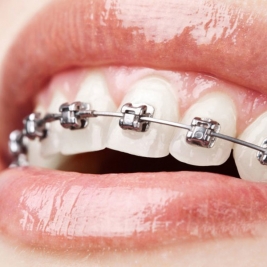
A crown is commonly called a “cap” that is placed over a mechanically weakened tooth (e.g. teeth with large cavities) in order to strengthen it.
A crown is made totally of porcelain shell or porcelain over metal. It completely encloses the remaining tooth structure thus restoring its appearance and function. It protects the tooth from further damage and preserves the jaw’s correct natural alignment. It is easily colour matched and blends seamlessly with your natural teeth. Tooth n Care is a reputed dental clinic renowned for dental crowns & bridges in East Maitland, NSW.
Other than simply strengthening teeth, crowns are used to restore badly decayed, chipped or discoloured teeth or teeth that have been replaced by an implant. They can also be used to protect the remaining teeth structure of teeth that have undergone root canal treatment.
It usually takes 2 visits to complete this procedure, assuming that root canal treatment is not required. At the first visit, the dentist will assess if you need to have a root canal treatment on the tooth. Root canal treatment is recommended where there is extensive decay or risk of infection or injury to the tooth’s pulp. About 1mm of the tooth is trimmed to make space for the final crown. An impression is taken along with a record of the tooth shade for fabrication in the laboratory. A temporary crown is placed on the prepared tooth. On the second visit, the temporary crown is removed and the final crown is tried to ensure excellent fit and aesthetic. After the try-in, the final crown is cemented onto the tooth permanently.
You can resume normal daily activities within 2 hours. Normal eating can be resumed almost immediately.
Local anesthesia is used to numb the gum before we start work on the tooth. This should minimize painful sensations. You should not feel any pain or discomfort after the procedure. However, if your tooth has not undergone root canal treatment, you may experience some mild sensitivity. It is crucial to take the prescribed medication.
With proper daily home care and regular dental check-up, crowns can last between 8 to 12 years. Clean between your crowns and teeth and floss to remove plaque from the crown area where the gum meets the tooth.
Crowns are indicated when there is a need to strengthen teeth that are mechanically weakened. If a tooth has part of its structure damaged by decay or fracture, crowns are the best treatment as they can restore teeth to their normal shape and size. If a tooth is cracked, the crown holds the tooth together. Veneers are thin porcelain coverings that are bonded onto the tooth exterior. Both crowns and veneers may be used for modifying colors or position of teeth. The gums around the teeth must be good health before crowns and veneer treatments. Crowns or veneers cannot treat gum problems. Consult a dentist to assess whether crowns or veneers are suitable for you and whether you need to address any existing gum problems.
In the past, metal was the main material used to make crowns and this often shows through, creating a dark edge. Now, crowns are made of high quality porcelain which blends seamlessly with your natural teeth.
A dental bridge, also known as a fixed partial denture, is a prosthetic tooth that attaches on one or both sides to teeth prepared with dental crowns. It consists of a pontic (false tooth) to replace the missing tooth and 2-crowns to anchor the pontic in place. The pontic is fused in between 2 crowns, thereby bridging them together. A bridge can restore your appearance and dental function by replacing 1 to 2 missing teeth.
It not only fills gaps but also prevents repositioning of remaining teeth. It can improve your speech and chewing, correct a misaligned bite, and maintain your face shape. If you need to undergo crown and bridge procedure in East Maitland, NSW, then Tooth n Care is the perfect dental clinic for you. The materials used for bridges include gold, porcelain fused to metal, or porcelain alone.
There are 3 major types of dental bridges. A traditional fixed bridge is the most common type of bridge and consists of a pontic fused between 2 porcelain crowns that are anchored on neighbouring teeth or implants. Resin-bonded or Maryland-bonded bridges are used when the gap to be filled is in between the front teeth, or when the teeth on either side of the missing tooth are h3 and healthy without large fillings. The pontic is fused to metal bands or “wings” that are bonded to the adjacent teeth using cement that is hidden from view. Cantilever bridges are used when there are teeth present on only one side of the space, where the pontic is anchored to one or more adjacent teeth on one side.
Call us now : 02 4933 4667
Make Appointment Online Book Online